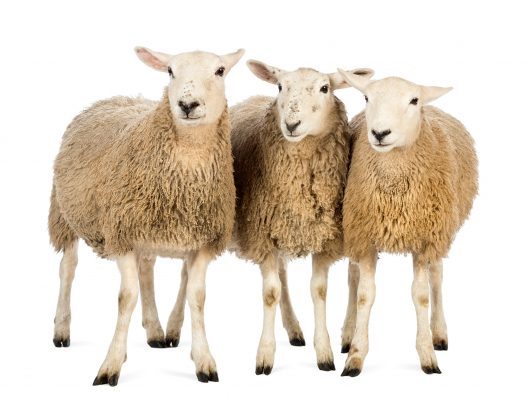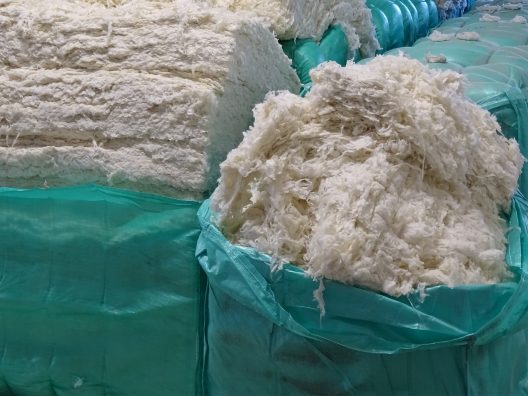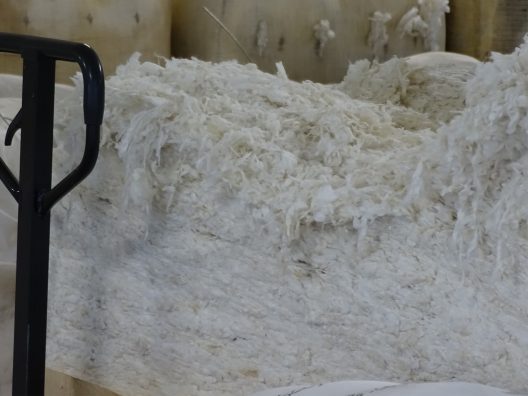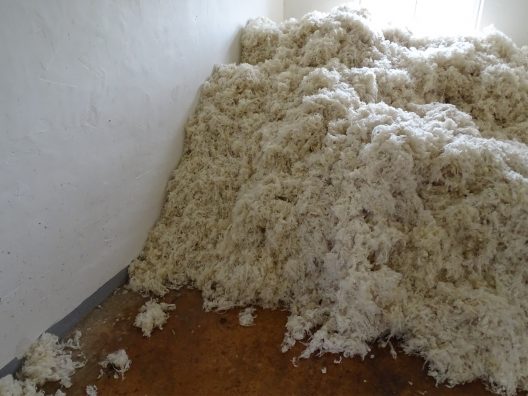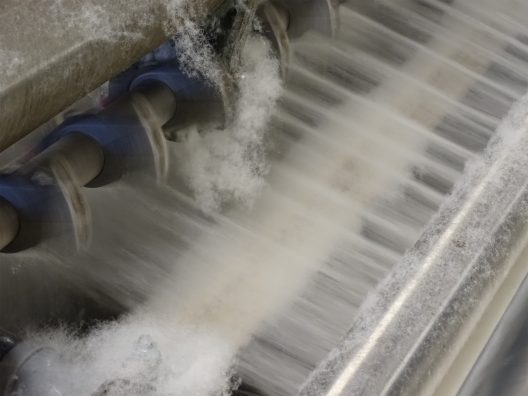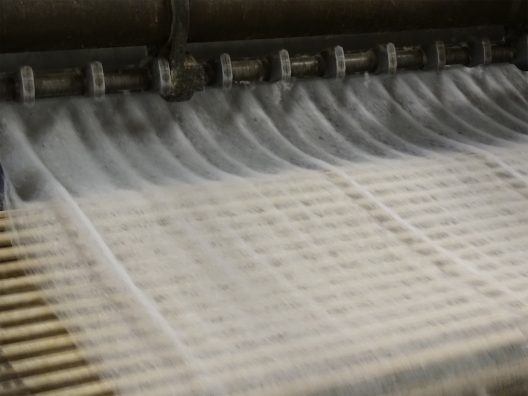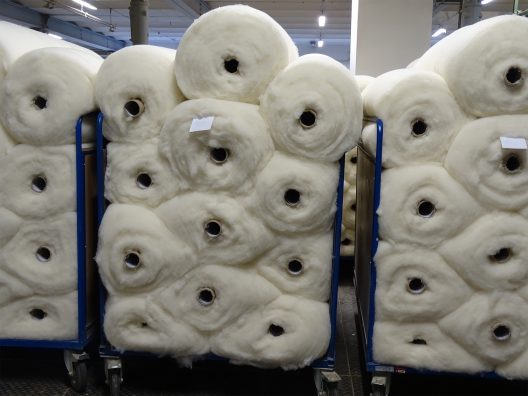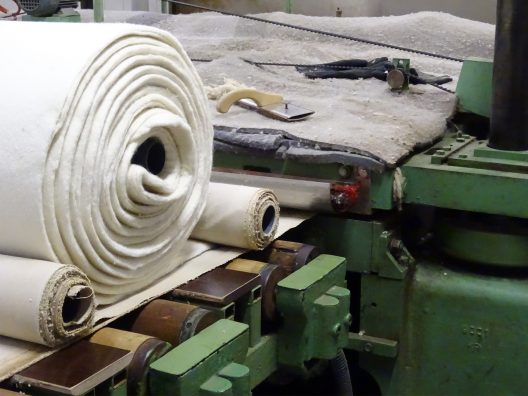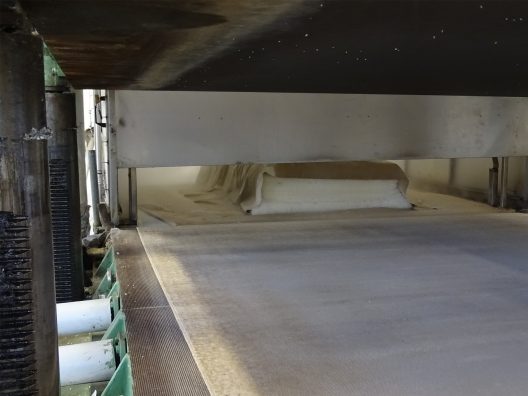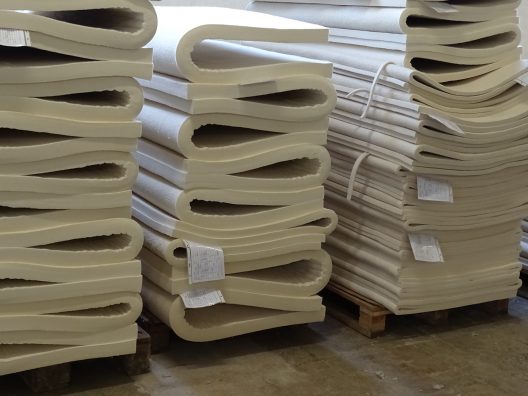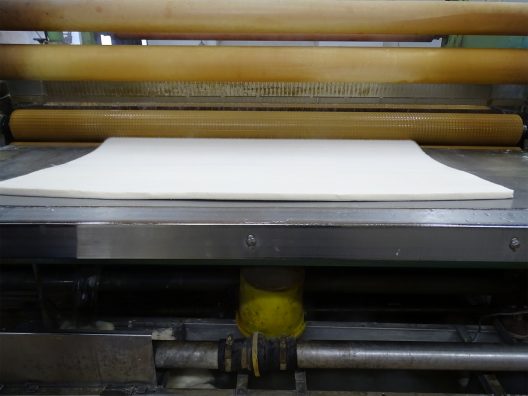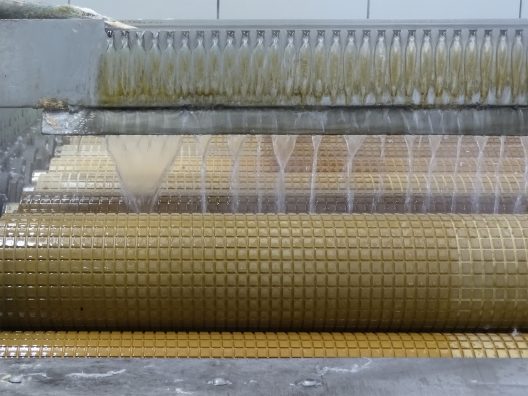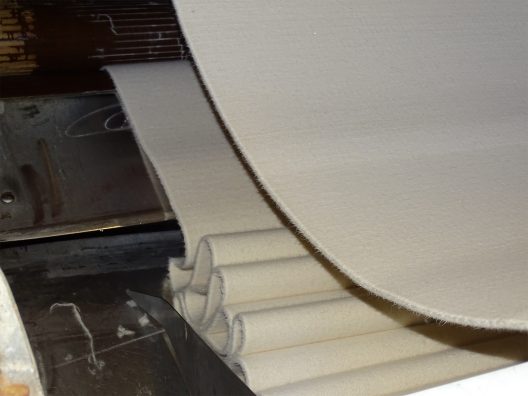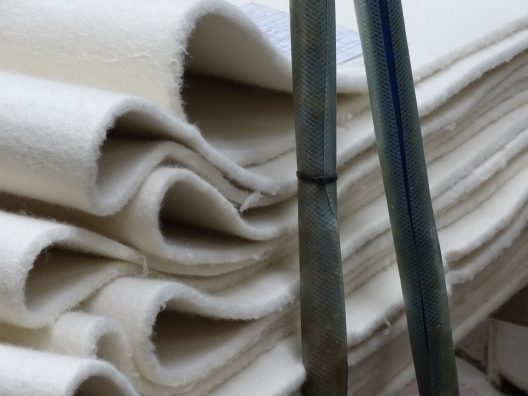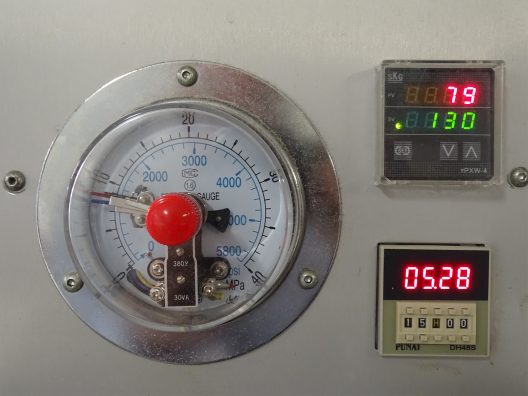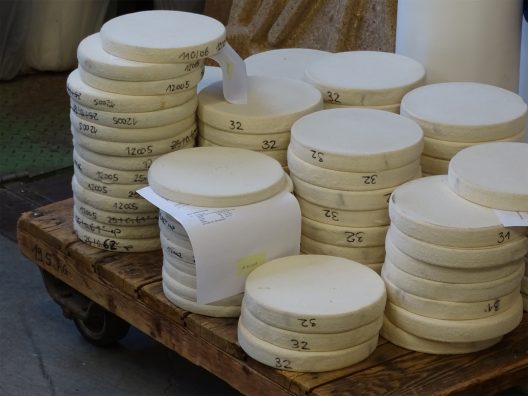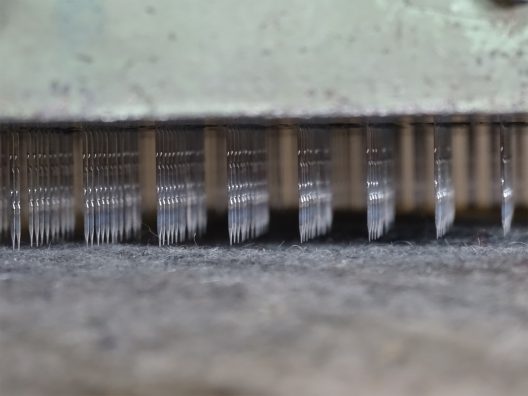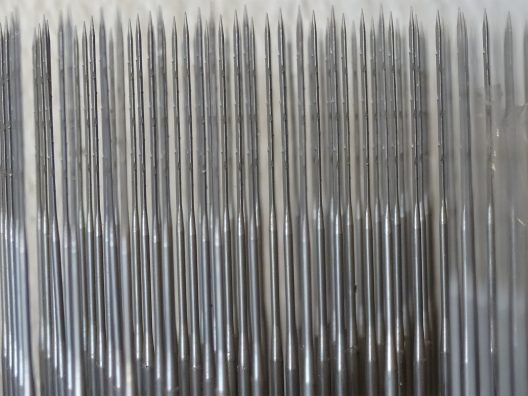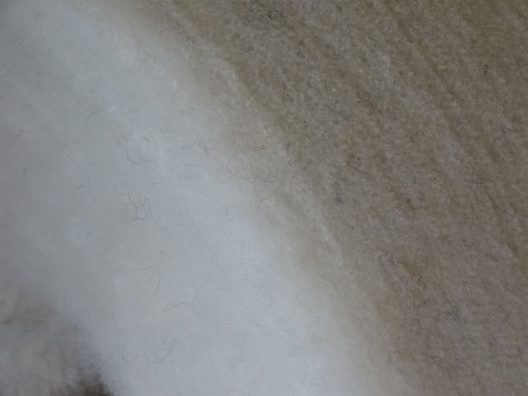PRODUCTION/FINISHING
Many different production processes are now available, some of which can be combined. Technical felts have traditionally been divided into fulled felts and needle felts.
The production processes for fulled felts and needle felts are fundamentally different. The method of manufacture for fulled felts has not changed significantly for centuries. Nonetheless, the most important process steps can only be carried out successfully if you have the necessary experience.
Fulled felt or wool felt
Felt is generally produced using sheep wool. Raw wool that has been cleaned, combed, processed into fleece, and possibly also dyed if necessary, is transformed into a coherently bound material by a mechanical process known as fulling This is the origin of the term ‘fulled felt’. The individual fibres become intertwined here in a random manner. The sheep hairs (wool) have a surface of microscopic overlapping scales that become hooked into one another during the fulling process.
Felting
The pre-processed fleece materials are felted in a felting machine in the presence of moisture, heat and pressure, and under the action of circular movements. The fibres become matted due to the intertwining of the overlapping scales on their surfaces. A coherent material is formed – this is felt!
Fulling
This is followed by the fulling step, with compression and hammering in various directions. The felted material is kneaded thoroughly here by passing it through a number of pairs of rollers that are operated under pressure. This continues the felting process. Here too, warm water is added in order to speed up the fulling process. Particular attention is paid to the thickness, width and length of the felt in this process step.
Finishing
After the fulling process is complete, the felt is again washed and spun, and then dried in drying rooms in sheet form or in drying furnaces in bale form. Drying can take up to several days in the case of very thick sheets (thicknesses above 100 mm). Depending on the client’s wishes, the felt can then be shaved, ground or ironed in a press to ensure a smooth surface finish.
Thus you can see that in order to produce wool felts, quite a number of individual processing steps are necessary that have to be carefully coordinated.
As a result, this summary can only provide a rough overview of the production steps.
If you have questions regarding our products, your specific applications or particular quality requirements, please do not hesitate to contact us!
Needle felt
In the case of needle felts, dry wool is processed using special felting needles to produce a defined thickness and weight per unit area. Thousands of these needles are mounted on so-called needle bars that are used to prod the needles into the fibre structure. This thrusting action can be carried out either on one side or both sides.
The felting needles have small notches that are like barbed hooks; these are oriented in such a way that their openings face the tip of the needle. When these needles are thrust into the material, fibres become caught up in these hooks and remain stuck there when the needle is pulled out of the felt again. When this action is repeated, the needles form loops and arcs in the fibres – as a result, they become intertwined in a three dimensional manner to create felt. In subsequent finishing steps, the needle felt can be treated chemically or with steam.
Needle fleece materials of this type can be produced not just from wool and animal hairs, but also from practically all other fibres that do not have a surface structure of overlapping scales. There are needle felts made of synthetic fibres (PES, PE, PA, PP, PAN) and of natural fibres (wool, jute, hemp, coconut) too.




